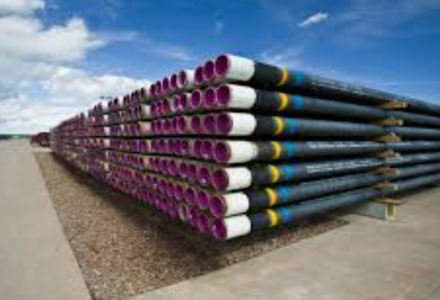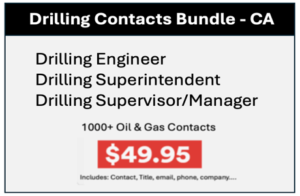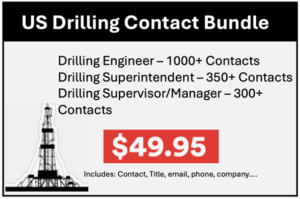Rising tariffs and import restrictions on steel and Oil Country Tubular Goods (OCTG) have sent ripples through the oil and gas industry, altering market dynamics and reshaping cost structures. As key inputs in the exploration, production, and transportation of hydrocarbons, steel and OCTG are integral to energy projects. This blog explores the multifaceted impacts of these policy changes and their implications for the industry.

1. Increased Costs for Oil and Gas Operations
Tariffs on imported steel, such as the U.S. Section 232 tariffs, which imposed a 25% duty on steel imports, have led to higher input costs for OCTG manufacturers. This increase is directly felt by exploration and production (E&P) companies, as OCTG products, including casings, tubing, and drill pipes, account for a significant portion of well costs.
For E&P operators, particularly smaller companies, the rising cost of OCTG translates to higher costs per well. In some cases, this can render certain drilling projects economically unviable, especially in low-margin plays. Consequently, operators may delay or cancel projects, reducing overall industry activity.
2. Boost to Domestic Manufacturing
Import restrictions can benefit domestic steel mills and OCTG manufacturers by reducing competition from lower-cost imports. This protectionist measure often leads to increased domestic production capacity and utilization. However, the ability of domestic suppliers to meet demand—particularly for specialized steel grades and products—remains a concern.
While local manufacturers stand to gain, the benefits are often tempered by supply chain bottlenecks and limited capacity to produce certain high-specification OCTG products required for advanced drilling operations.
3. Supply Chain Disruptions
The global nature of the steel and OCTG supply chain means that import restrictions can lead to significant disruptions. Many E&P companies depend on imported products to meet specific project requirements. When tariffs or quotas restrict supply, companies face delays, higher costs, or both.
Stockpiling behavior often exacerbates these challenges. Companies may preemptively purchase large quantities of steel and OCTG ahead of tariff implementation, leading to short-term price spikes and subsequent shortages when imports decline.
4. Price Volatility and Budgeting Challenges
Steel tariffs and import restrictions contribute to price volatility in the OCTG market. The uncertainty surrounding material costs makes it difficult for operators to plan budgets and project timelines effectively. For long-term projects, this volatility can result in repeated contract renegotiations and cost overruns, further complicating operational planning.
5. Global Trade Tensions and Retaliatory Measures
Import restrictions often provoke retaliatory tariffs from affected countries, escalating trade tensions. For the oil and gas sector, this can disrupt established supply chains and create additional challenges in securing materials.
For example, if countries that export steel to the U.S. impose tariffs on American products, it can affect U.S.-based manufacturers and exporters, leading to broader economic impacts.
6. Impact on Smaller Operators
Smaller E&P companies are particularly vulnerable to rising steel and OCTG costs. Unlike larger operators, they lack the scale and financial resources to absorb significant cost increases. This imbalance can reduce their competitiveness and force them to scale back operations or seek alternative financing options.
7. Midstream and Infrastructure Impacts
Tariffs on steel also affect the midstream sector. Pipeline projects, which require significant quantities of steel, are especially vulnerable to rising material costs. Higher steel prices can lead to cost overruns, delays, and even project cancellations. This, in turn, affects the broader oil and gas value chain, as midstream infrastructure is critical for transporting hydrocarbons from production sites to refineries and markets.
8. Long-Term Industry Adjustments
In response to rising costs and supply chain challenges, companies may explore alternative materials or invest in technological innovations to reduce reliance on imported steel. However, these adjustments often take years to implement and may not fully offset the immediate impacts of tariffs and restrictions.
Real-World Examples
- Section 232 Tariffs: Introduced in 2018, these tariffs raised domestic steel prices, leading to higher costs for OCTG products. Many E&P companies faced increased operational expenses, prompting some to delay or cancel drilling projects.
- Pipeline Projects: Rising steel prices have impacted major pipeline projects, increasing costs and creating delays. This has broader implications for energy infrastructure development, particularly in regions like the Permian Basin.
Conclusion
Rising tariffs and import restrictions on steel and OCTG present both challenges and opportunities for the oil and gas industry. While domestic manufacturers may benefit from reduced competition, the broader industry faces higher costs, supply chain disruptions, and project delays. For E&P operators, especially smaller players, these impacts can be significant, influencing decisions on drilling, completions, and infrastructure investments.
As the industry navigates these changes, stakeholders must adapt to a more complex and uncertain market environment. Strategic planning, supply chain diversification, and innovation will be critical for mitigating the long-term impacts of these policy shifts.
What are your thoughts on the current tariff landscape? Are you seeing impacts on your projects? Share your insights in the comments below!





